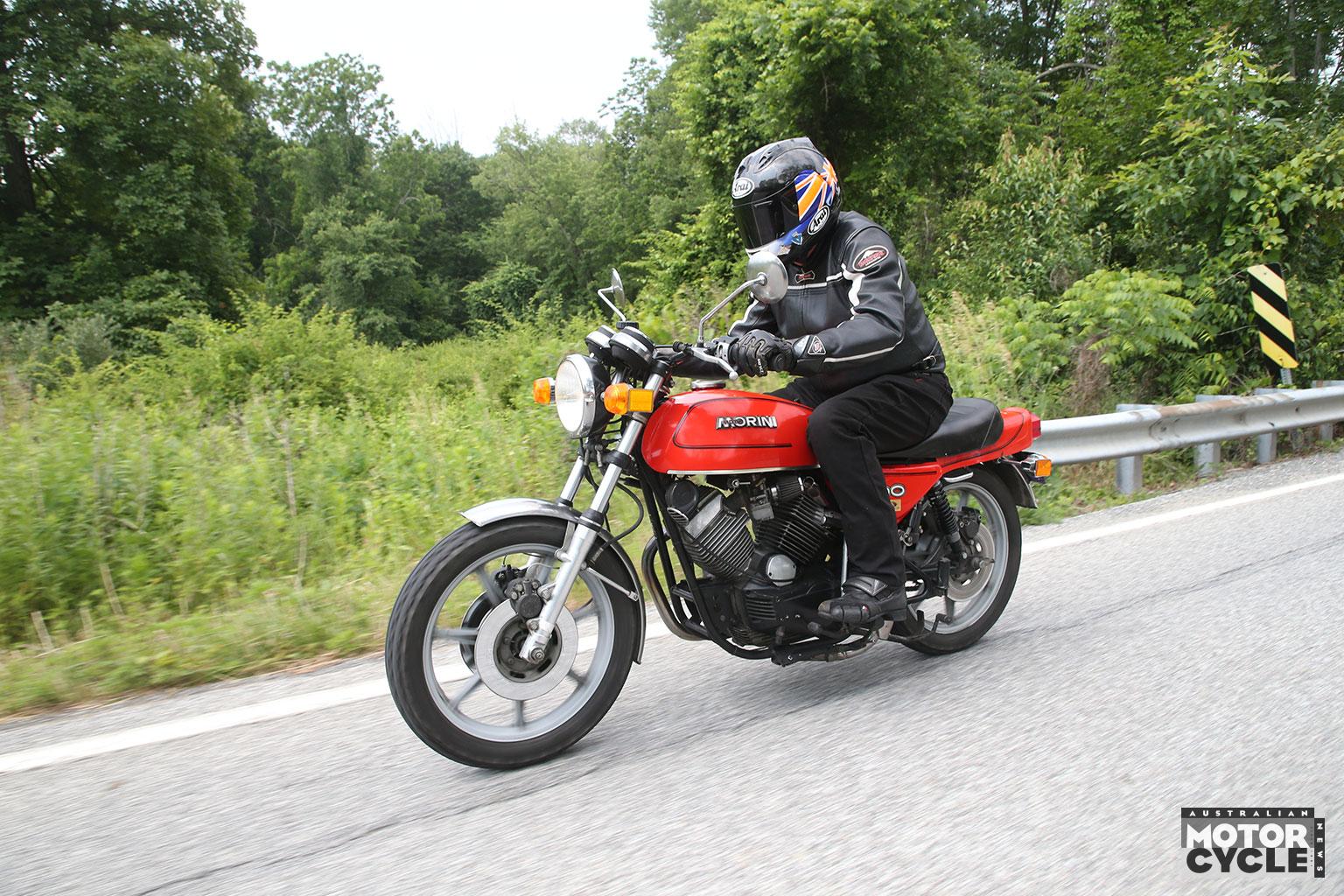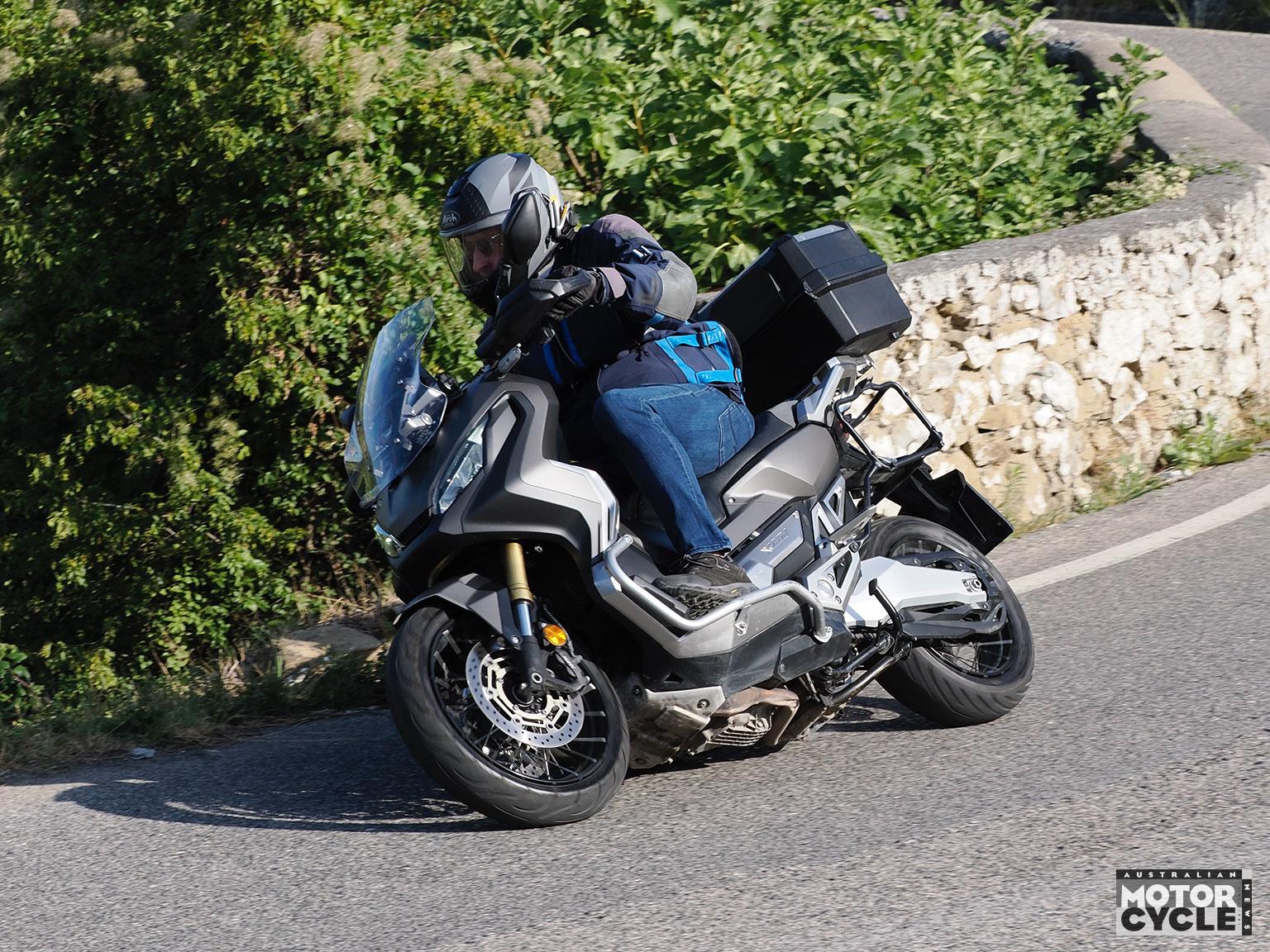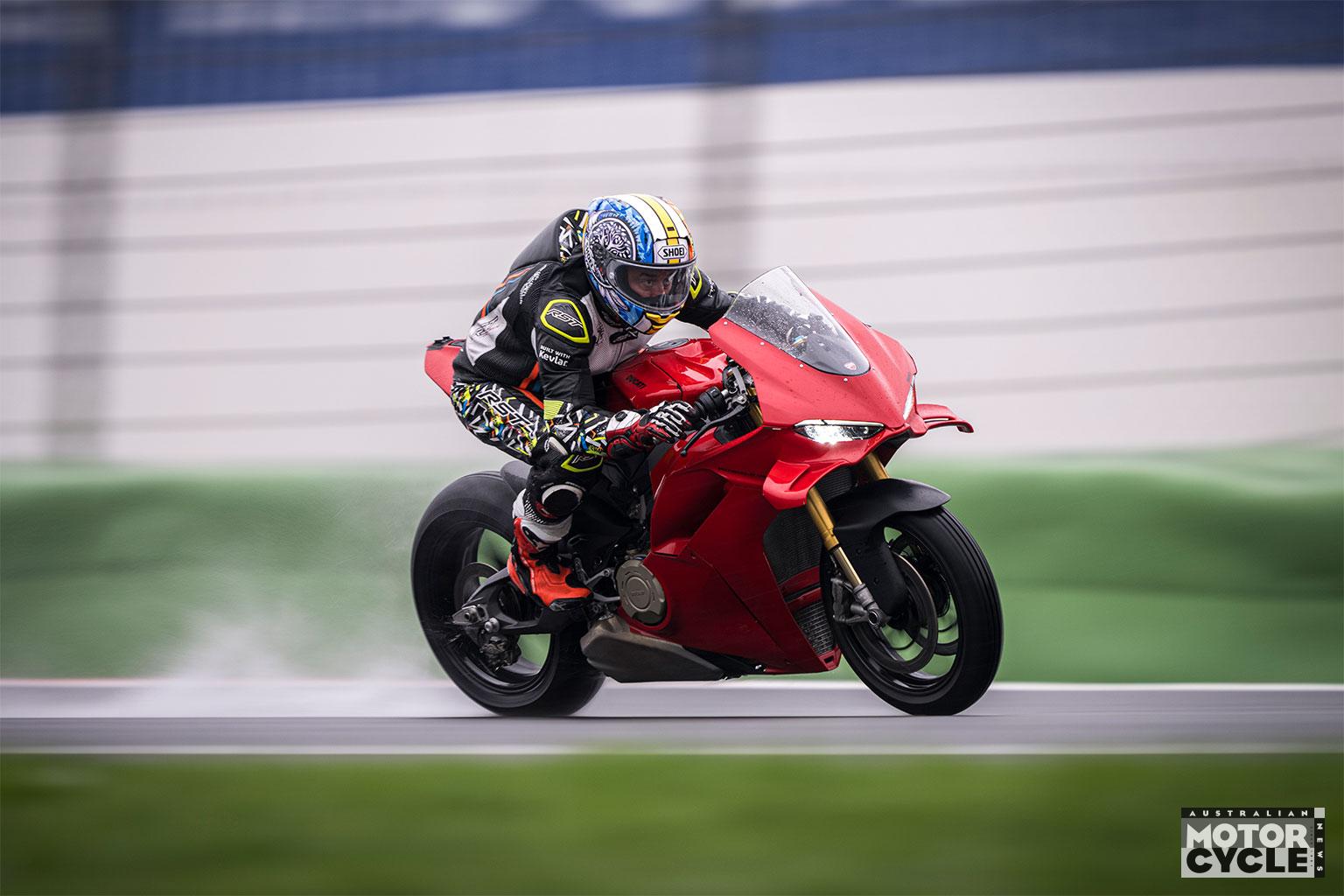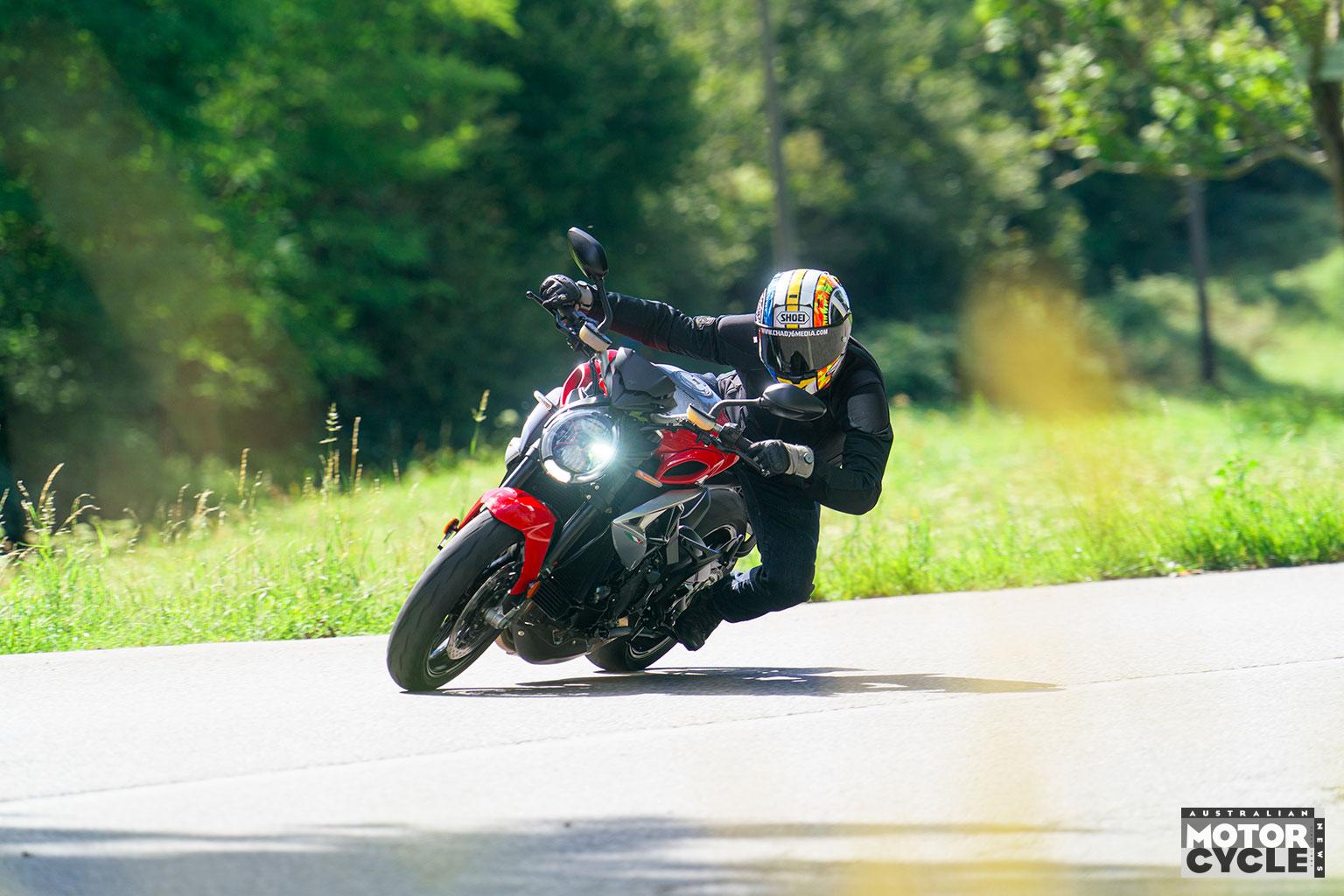While exploring my local backroads on the new CFMoto 450NK, I can’t help but be reminded of Hyosung and the waves the Korean brand was making in the 2000s in a market saturated by Japanese and European machinery.
Then, as I am now, I was impressed by the quality and appointments offered on the Korean-made bikes and how, after a decade or so of development and improvement, the brand had managed to shake off its cheap and unreliable image to present itself as a player that could take it to the higher-priced establishment.
In fact, it was 15 years ago this month that I attended the launch for the 2010 model-year line-up for the 650cc range. Gone were the ag-bike-like instruments, the carburettors, the substandard brake calipers and the awkward styling that made Hyosungs an easy target. Instead, the three-tiered GT range suddenly offered the everyday rider with practical, reliable and affordable options.

CFMoto was founded in 1989 and has been in Australian dealerships for nearly 20 years. Not too dissimilar to Hyosung at the time, a constant rollout of high-quality and reliable machinery in the face of some harsh and often undeserving criticism during the past decade has really firmed up the brand as an affordable, reliable and increasingly credible manufacturer.
But the real reason I’m drawing these comparisons is that for 2010, Hyosung’s GT650 V-twin nakedbike – complete with fuel injection, water-cooling, a fully-adjustable upside-down fork and a two-year unlimited-kilometre warranty – came with an enormously competitive price tag of $7990 plus on-road costs.
And here I am, 15 years later, riding CFMoto’s 450NK parallel-twin nakedbike – complete with fuel-injection, Bosch ABS, traction control, an upside-down fork, a clever and informative TFT screen, phone connectivity and a three-year warranty – with a ride-away price of $7790. Pretty incredible when you think about the past decade and half and what’s happening in the world.
Luckily for us, motorcycles help us forget about what’s happening in the world, and as far as 450cc nakedbikes go, this one’s pretty engaging. Most of that is due to its 449.9cc parallel-twin engine. It’s got a 270-degree firing order, generally employed to make a parallel twin mimic V-twin characteristics, but any of the associated ‘lumpiness’ is ironed out with a balancer shaft.

The result is a torquey engine that spins quickly and freely. There’s an excellent connection with the throttle – probably in part due to the fact that’s it’s a mechanical cable-style affair, but the Bosch electronic fueling is also spot on – and it all culminates in a great-sounding exhaust note.
Climb aboard the 450cc nakedbike and you find yourself sitting fairly deep within it rather than assuming a chin-forward stance like on a lot of other rivals in this genre.
Once settled, I found the instruments to be level with the middle of my torso. On the move I was impressed to learn the tank and its wind-tunnel-developed wing-like shrouds offered a fair bit of protection from winter’s chilly air, most notably on my denim-covered thighs. The low 795mm seat height is matched with some high-ish ’pegs for a relaxed yet sporty feel. While taller riders than me might feel cramped after a while, I found the ergonomics pretty perfect for my 164cm stature.
Turn the key and the five-inch dash comes alive with a start-up sequence before greeting you with a vast array of info and tailorable options. The dash is controlled via a four-way pad on the left-hand switchblock, with the top and bottom buttons allowing for up-and-down selection. The left button takes you back one step within the menu, while the right lets you either move to the next screen or confirm your selection.

In terms of the tech buried within that impressive looking dash, there’s more than you can poke a stick at. As well as all the usual gaff, you can chose between two different layouts and adjust what RPM you want your shift lights to come on at.
The standard fitment T-Box system – which uses a wired-in Bluetooth receiver, GPS and 4G data (for free!) – can send you notifications on the bike’s whereabouts, its maximum and average speeds, your lap times, any fault codes and maintenance requirements, as well as the usual send/receive calls and message functions. Impressive inclusions for the price, especially when you consider the latest Kawasaki Z400 still rocks a basic LCD unit.
Speaking of features, there are more than a few inexpensive but useful ones dotted around the 450, such as hazard lights, (activated by a button on the right-hand switchblock) and a looped strap tucked away under the pillion seat which, when exposed and the pillion pad replaced, provides something decent for your passenger to hang on to. There’s also an extended chain guard which more or less seals the moving parts from any wayward
clothing or laces.
There’s no quickshifter to speak of but the gear ratios are really well spaced and I found you could load the gearshifter until you’ve reached the revs where you want to change up to the next cog, and all you need to do is back off the throttle ever so slightly and the next gear will slip into place without losing any momentum.

When you do find yourself using the clutch for stopping and starting, or in stop-start traffic, it’s super lightweight and lovely to use. It’s these sorts of abilities that make you realise this is a well-built bit of kit.
And as well being really engaging and sounding great, the 449.9cc engine feels really well sorted, like it’ll go forever. It’s good for 37kW (49.6hp) of power at 9500rpm and 39Nm of torque nearly 2000rpm earlier at 7600rpm. Not numbers to brag about, granted, but it’s the delivery that surprises you the most in this application. As I’m always telling the kids: sometimes it’s not what you say but it’s how you say it that will garner results. And that’s very much the case with this perky and robust-feeling engine.
A single-disc front brake and a non-adjustable fork strike a good balance between cost and capability. The lack of adjustment probably speaks as much to the target rider as it does the cost-savings and the standard setting will be better (and safer) than what the uninitiated might believe they can dial in anyway. I did find the rear monoshock a bit firm for my 64kg frame, but I’ll take slightly firm over a little soft any day of the week. Both ends offer 130mm of travel.
The single-disc set-up is more than capable of pulling up the 173kg (fully fueled) machine thanks to the quality J.Juan four-piston radial caliper biting a full-size 320mm disc. Engine braking from that 270-degree crank plays a supporting role here, too. The single-piston rear caliper and 220mm disc has plenty of feel.

As you’d expect on a well-sorted machine, neither the ABS nor the traction control intervention are in any way obtrusive. Neither have any ability for adjustment or deactivation, but that’s probably a good thing on an affordable learner-legal machine.
The tyres are the work of CST, another brand slowly shaking off its negative stigma. The ones on the NK are the same semi-slick Adreno hoops Wattie was getting his knee-down on after a couple of laps of a training facility at the Australian launch of the NK’s fully-faired SR stablemate (AMCN Vol 73 No 01). Needless to say, I have no complaints in this nakedbike application.
If I had to find a complaint, the coolant bottle looks slightly exposed, sitting on the right-hand side of the bike between the alternator cover and the fuel tank. It might be one of the first things to hit the ground in the event of a topple over. It does gain a sturdy plastic cover, though, which might take the brunt of the fall.

Mind you, while there’s still fairly limited accessories available for the nakedbike, there’s things like front ($61.95) and rear ($40.55) axle sliders and radiator guard ($61.95) that you’d expect to be interchangeable between the 450NK and the fully-faired 450SR that, given how inexpensive they are, wouldn’t be a bad idea to fit.
The fuel tank feels a bit larger than its 14L capacity would suggest, but it does offer the rider some protection, and the seat feels plush and supportive – again, better than I’ve experienced at this price point in the past.
An unpopular opinion maybe, but if CFMoto’s latest offering is any indication off the quality of affordable Chinese-made machinery we’re on the brink of being inundated with, then it’s a good time to be a motorcyclist.
PROS: Stonking little engine with a tonne of character powers an affordable but well-built naked.
CONS: Coolant bottle looks slightly exposed in the event of a fall and lighter riders may find the rear shock a bit too firm.
THE ONLY WAY IS UP

Inline-four 500 and triple-cylinder 675 on the way
CFMoto has been drip-feeding us details of its highly anticipated 675cc triple-cylinder sportsbike for months now, but a 500cc inline four-cylinder 500SR is set to join the 300 and 450SR models, which should naturally lead to
a nakedbike offering, too.
In terms of the 500’s performance, there’s a clue to the bike’s power and torque in a teaser video released by CFMoto. It shows the bike’s TFT dash, including a rev counter with a graduated red band running from 11,000rpm to 16,000rpm and, unusually, a graph showing power and torque curves on the instrument panel. Although lacking figures, it’s likely that each of the horizontal lines represents 20kW for the red power curve and 20Nm on the white torque line. If that’s the case, then the engine peaks just short of 60kW and around 12,000rpm, with a maximum torque of about 47Nm peaking in the region of 10,000rpm. Those numbers match well with our expectations given that its closest four-cylinder rival, Kawasaki’s ZX-4RR, manages 55kW at 14,500rpm and 37.6Nm at 12,500rpm.
THE COMPETITION
CFMoto 450NK

449.9cc parallel-twin
37kW (50hp) / 39Nm
795mm seat height
173kg (wet)
$7790 (ride away)
KTM 390 Duke

398.7cc single
35kW (47hp) / 39Nm
820mm seat height
165kg (wet)
$8965 (ride away)
Kawasaki Z400

399cc parallel-twin
34kW (45hp) / 37Nm
785mm seat height
167kg (kerb)
$7094 (plus on-road costs)
Royal Enfield Guerrilla 450

452cc single
29kW (39hp) / 40Nm
780mm seat height
185kg (90% fuel)
$TBC
SPECIFICATIONS

ENGINE
Capacity 449.9cc
Type Parallel-twin, 270º crank, DOHC
Bore & stroke 72 x 55.2mm
Compression ratio Not given
Cooling Liquid
Fueling EFI, Bosch
Transmission Six-speed
Clutch Wet, multi-plate, slipper
Final drive Chain
PERFORMANCE
Power 37kW (49.6hp) @ 10,000rpm (claimed)
Torque 39.3Nm @ 7600rpm (claimed)
Top speed 190km/h (est)
Fuel consumption 4.8L/100km (measured)
ELECTRONICS
Type Bosch
Rider aids ABS, traction control and shift light
Rider modes Not applicable
CHASSIS
Frame material Chro-moly alloy steel
Frame type Trellis
Rake Not given
Trail Not given
Wheelbase 1370mm
SUSPENSION
Type CFMoto
Front: 37mm upside-down fork, non-adjustable, 130mm travel
Rear: Multi-link monoshock, adjustable preload, 130mm travel
WHEELS & BRAKES
Wheels Cast aluminium
Front: 19 x 3.0
Rear: 17 x 4.0
Tyres CST Adreno HS AS5
Front: 110/70R17
Rear: 150/60R17
Brakes J.Juan, ABS
Front: Single 320mm disc, four-piston caliper
Rear: Single 220mm disc, single-piston caliper
DIMENSIONS
Weight 173kg (wet, claimed)
Seat height 795mm
Width Not given
Height Not given
Length Not given
Ground clearance Not given
Fuel capacity 14L
SERVICING & WARRANTY
Servicing First: 1000km
Minor: 6000km
Major: 24,000km
Warranty Up to three years, unlimited kilometres
BUSINESS END
Price $7790 (ride away)
Colour options Nebula Black or Nebula white
CONTACT
www.cfmoto.com.au











